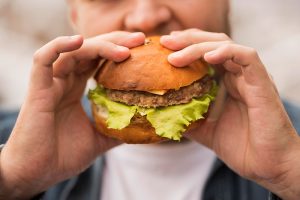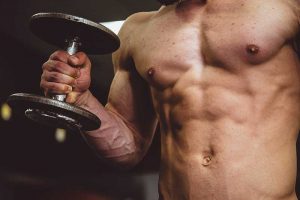So, you’re looking for massive gains, right? But instead of eating every junk food under the sun, you’re opting for a healthy bulking diet to pack on muscle mass.
We totally get it. A dirty bulk can be detrimental to your health in the long run, and let’s face it, all that junk food is going to make you feel pretty sluggish.
But what is the best food for bulking?
Don’t worry, we’re about to cover everything you need, from bulking foods to a bulking meal plan you can get started on right away.
Creating the best bulking diet
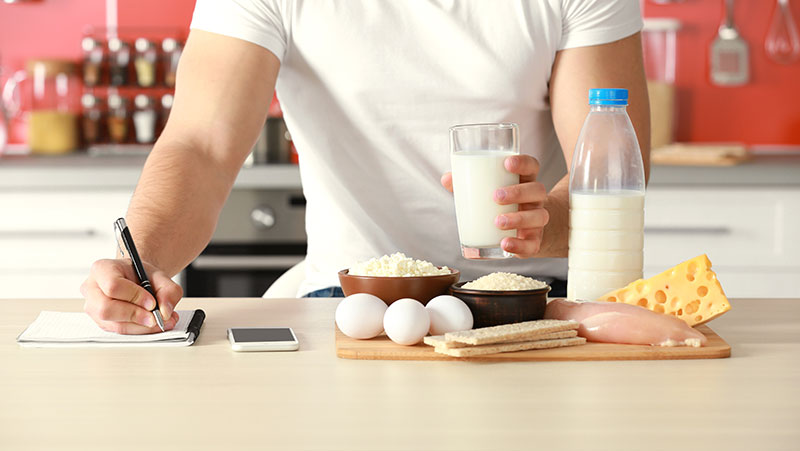
While a dirty bulk might be tempting, since you can pretty much eat whatever you like – it’s not going to do your body any good. Plus, with potential excess fat gain, you could end up with the complete opposite of what you’re aiming for.
So how do create the ultimate bulking meal plan? Well, here are our top 16 bulking foods to include in your meals:
- Nuts and seeds
- Beef
- Eggs
- Beans
- Milk
- Yogurt
- Oil
- Avocado
- Cheese
- Dried fruit
- Olives
- Pasta
- Granola
- Oats
- Potatoes
- Whole grain bread/crackers
Adding these healthy bulking foods to your meal plan will help you achieve your desired muscle gain.
Personalizing your bulking foods
When it comes to creating the best bulking diet, you need to consider that there is no one size fits all plan. We all have different bodies, metabolism and genetic make-up – meaning that one set of bulking foods or meals may not necessarily work for another.
Striking the right balance when choosing the best bulking foods for your needs is crucial to hitting your body goals.
Firstly, you need to be realistic with the amount of weight you aim to gain, especially if you’re doing a clean, healthy bulk. Nearly all of us will gain weight fast when following a dirty bulk diet, however, the potential health risks aren’t worth it.
Committing to a bulking diet is one half of the battle, in order to see progress. Whether it’s weight loss or weight gain, taking drastic measures can often do more harm than good, with the potential to damage your metabolism.
Understanding your metabolism

You’ve undoubtedly heard about metabolism before now. Your metabolism converts calories (energy) from food into fuel. Whether we’re exercising, watching TV or even just breathing, calories support our body’s natural functions.
Also Read: Dianabol (Dbol) Cycle – Guide, Results, Side Effects and Dosage
In order to gain weight safely, and understand how bulking diets work, you must first take a closer look at metabolism and your daily calorie burn.
Knowing your resting metabolic rate (RMR)
Your resting metabolic rate is the amount of energy your body requires at rest. This is the number of calories you need in order to perform everyday, essential functions – such as circulation, cell function and breathing.
Thermic effect – Food
Since we require energy to breathe and other bodily functions, we can’t forget about the energy we require to break down food.
Whether it’s swallowing, digesting, absorbing or storing food, our bodies need energy for these functions!
Thermic effect – Exercise
As well as the energy we require to eat and digest food, our bodies also require fuel to perform daily life activities and physical exercise. Whether it’s standing up or performing a HIIT workout, they both require energy.
So when you’re building a bulking meal plan to gain weight, if you’re activity levels are high, you’re going to need higher calorie bulking foods.
Non-exercise activity thermogenesis
Many of us don’t realise it, but if you’re someone who just can’t sit still, you could have a higher non-exercise activity calorie burn.
Whether you’re a bit of a fidget or you’re always moving around in some form, it’s an interesting concept to consider.
Calories for your bulking diet
A quick snoop online will show you a whole world of ways to determine your metabolic rate. If you’re looking for tough gains, you’re going to want to be eating beyond your standard metabolic rate.
| Training intensity | Calories per pound bodyweight |
| Low: Minimal exercise | 13 to 15 |
| Limited: Training 30 to 60 minutes, 5 to 6 times/week | 16 to 18 |
| Moderate: Training 1 to 1 ½ hours, 5 to 6 times/week | 19 to 21 |
| High: Training 1 ½ to 2 hours, 5 to 6 times/week | 22 to 24 |
| Very high: Training 2 to 3 hours, 5 to 6+ times/week | 25 to 30 |
Obviously, you want to bulk up. Otherwise why would you be checking out the best bulking foods! So if you’re looking to gain weight, you’ll want to be adding around 500 to 1000 calories extra each day.
As an example:
An athlete weighing 160 pounds who trains moderately = 3,040 to 3,360 calories daily.
When we then look at this example from a bulking point of view:
+500 calories daily = 3,540 to 3,860 calories daily.
Or, to determine your bulking calorie needs, try adding a surplus of 10% to your standard calorie requirements.
Also Read: Trenbolone side effects – Everything you need to know
When it comes to the amount of weight you aim to gain during your bulking diet, a realistic gain is around 0.5 to 1 pound per week.
Macronutrients during your bulking diet

While calories will naturally be your main focus when preparing your bulking meals, macronutrients should also be a key factor when trying to gain muscle.
Macronutrients are split into three areas:
- Protein
- Fat
- Carbohydrates
Hitting the right balance of these three macronutrients is key for gaining muscle, rather than excess fat.
According to Washington State University, these nutrients are responsible for the following:
- Fat: This source of healthy fats help to protect vital organs, provide insulation and energy reserve, as well as transport fat soluble vitamins
- Protein: Helps to support muscle and tissue structure, metabolism and hormonal systems and influence base/acid balance
- Carbs: Provide fuel during exercise, spares protein and is the main energy source for your brain’s functions
Macronutrient recommendations
But how should your macronutrients be divided during your bulking diet?
According to the Food and Nutrition Board of the Institutes of Medicine (IOM) there is no definitive figure that suits everyone. While this range may fluctuate slightly from one person to the next, an acceptable macronutrient is:
- 45% to 65% carbohydrate
- 10% to 35% protein
- 20% to 35% fat
However, when you’re following a bulking meal plan, your macronutrient ranges should get a little more specific! Such as:
- 40% carbohydrates (4-7g/kg body weight)
- 25% protein (2-2.5g/kg body weight)
- 35% fat (0.5-2g/kg body weight)
The best food for bulking
So, what bulking foods should you be eating? It’s time to skip the dirty bulk (put down that pizza!) and get plenty of healthy fats, protein and whole carbohydrates into your bulking meal plan.
Eating these foods will not only give you plenty of fuel for your workouts, but they’ll also keep you feeling your best.
Protein bulking foods
Eggs
When it comes to the best food for bulking, eggs are always a go-to for a dose of protein.
Not only are they highly bioavailable, digested, absorbed and used efficiently by the body, but they also contain all of the essential amino acids.
Nuts and seeds
Not only are nuts and seeds a vital bulking food, but they’re also great for snacking and eating on the go.
With plenty of healthy fats, vitamins, minerals and fiber packed into these natural nibbles, oiled versions will help you get your extra calories in!
Beef
While beef is usually a no-go for a lean, clean bulking diet, in moderation it can be incredibly beneficial. Try to eat good quality cuts of beef and stay clear of processed versions – such as jerky and deli meats.
Some red meats are high in saturated fat, which may be acceptable in a dirty bulk, but not during a health bulking diet – unless eaten in moderation. Opt for grass-fed versions where possible, as these contain more healthy omega-3 fatty acids.
Beans
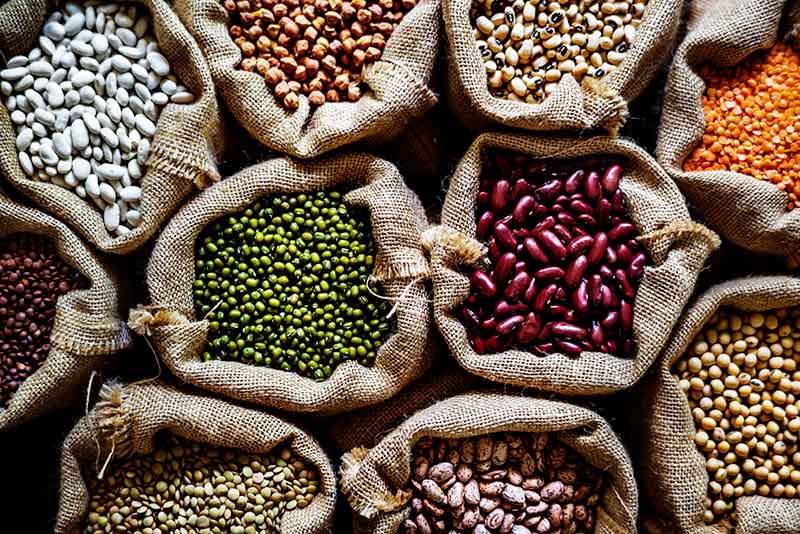
Beans are great for your heart and your muscle gains. As a part of a healthy bulking diet, beans are an excellent source of iron, folate, potassium and zinc.
As well as these important nutrients, beans are also rich in protein and fiber – which is key for muscle growth and supporting your workouts.
Depending on the type of bean, one cup contains about 200 to 300 calories. If you’re unsure how to incorporate them into your bulking meal plan, mash them up or blend them!
Yogurt
While diet after diet will tell you to opt for low-fat, low-sugar alternative, when you’re looking to gain weight during a bulking diet, you’re going to want to go full fat.
This type of yogurt not only provides your gut with a healthy boost of bacteria, but it also makes for a great snack with some nuts or fruit. Or why not whack it into a smoothie or shake.
Milk
This bulking food is great for getting all three of those all-important macronutrients: Fat, carbs and protein.
Plus, milk is packed with lots of minerals and vitamins, including calcium and vitamin D. When it comes to protein, milk is 20% whey and 90% casein. So when it comes to bulking up through a healthy bulking meal plan, milk can be perfect post-workout as it is quick to absorb.
Cheese
When it comes to cheese, you’re going to be getting a solid dose of protein, fat, calcium and calories in one go. As a part of a solid bulking meal plan, opt for full fat versions.
However, much like fats, not all cheese is equal! Aim for hard cheese, such as ricotta and cheddar, aiming for those that are more natural when checking out the ingredients list.
Bulking foods: Fats/Oils
Oil
Whether you’re using it to cook or drizzle on salad, fats and oils can provide your body with plenty of calories and heart-healthy unsaturated fats. Opt for plant-based oils, such as those from avocados and olives.
Also Read: The Best Steroids For Weight Loss – Steroid Comparison
With one tablespoon equalling around 120 calories, don’t go too overboard, but be prepared to use these oils for some extra calories!
Avocado

Love them or hate them, avocados are an excellent source of heart-healthy fats and vitamins, including vitamin E.
As well as helping you pack more calories into your bulking diet (around 300 per avocado!), they can also help to lower bad (LDL) cholesterol and increase good (HDL) cholesterol.
To eat: You can add them to your smoothies for extra creaminess, eat them on toast or on salads, too.
Olives
High in healthy fats, oleic acid and vitamin E, olives are great for heart health and decreasing inflammation.
Aim for the freshest you can find, from the deli or a market – preferably black olives as they are naturally rich in antioxidants.
Add to salads, sandwiches, tapenades and omelettes for extra flavor (and calories!).
Best bulking foods: Carbs
Dried fruit
If you’re looking for the best bulking foods to help you get stacked, dried fruit is an excellent dose of calories and natural carbs.
Since they are naturally high in sugar, they are great for adding extra calories into your bulking meal plan. Avoid dried fruits with preservatives and added sugar.
Whole grain bread and crackers
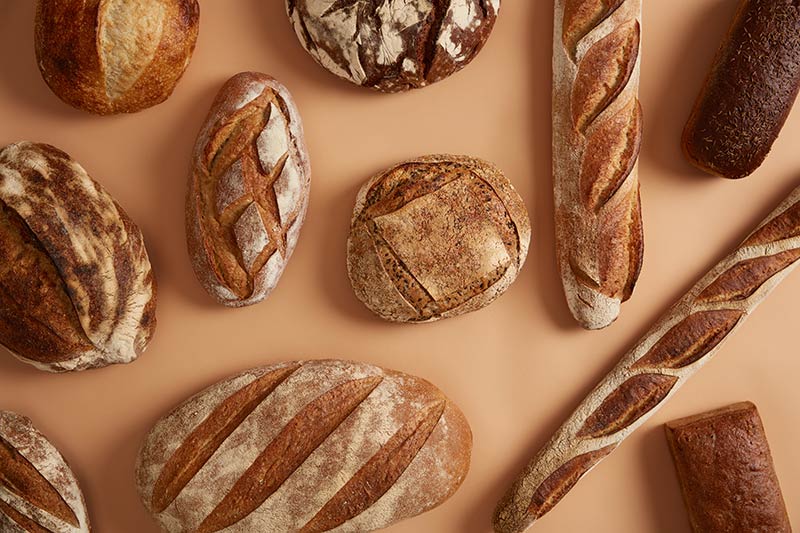
Great for pairing with protein sources, such as eggs, hummus and peanut butter, whole grain bread and crackers will deliver complex carbs – therefore steady energy, vitamins, minerals and fiber.
When looking for the best bulking foods in this category, aim for at least three gram of fiber per serving.
Pasta
At around 200 calories per cup, this high calorie food is great as a part of your bulking diet plan! Not only is pasta pretty adaptable, but it’s also easy to keep and prep when you’re low on time to create easy bulking meals.
Whether it’s pasta for dinner or a cold pasta salad for lunch, add sauces, oils and even avocado to pack in even more calories.
Potatoes
Rich in carbohydrates, white potatoes can be used for quick energy, stored as muscle or extra weight.
However, since we’re aiming for a healthy bulking meal plan, try to avoid fried versions and potato chips, as these will come with added salt and unhealthy fats.
Oats
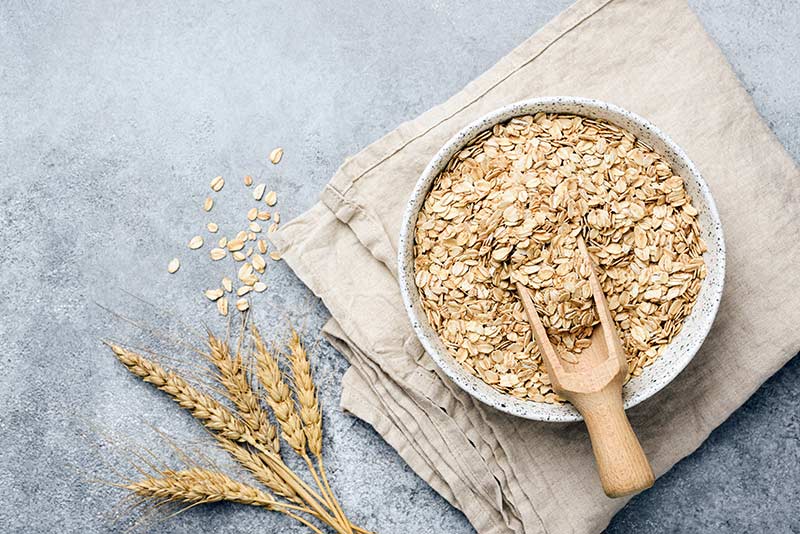
While many dieters look to oats for losing weight, they can actually be an excellent bulking food, too. Not only are they are a rich source of soluble fiber, but they can also help stabilize your blood sugar and slowly release energy when you need it.
When you’re looking for the best bulking meal plan, oats make for a nutritious breakfast with plenty of milk for extra calories. Or why not add dried fruit, nuts and honey for a little extra sweetness.
Granola
Usually made from oats and then coated with oil and sweeteners such as brown sugar and honey, granola can easily supply you with 500+ calories per cup.
For extra flavor, top with yogurt, nuts or dried fruit – giving you even more calories!
Fruits and vegetables

Surely, it’s obviously that a healthy bulking meal plan includes fruit and vegetables? Well! Although these foods are nutrient dense, they are actually very low in calories.
So while they may not be the best bulking foods around, they will certainly help in other areas including:
- Lowering blood pressure
- Reduce the risk of heart disease
- Prevent some types of cancer
- Help prevent digestive problems
- Regulate blood sugar
Try to add both fruit and vegetables to your bulking meal plan, with plenty of variety! If you find yourself getting full up on these foods instead, try adding them into smoothies instead.
Best food for bulking: How to get them
Now you know the best bulking foods around, let’s take a closer look at how to get them into your bulking meals!
On-hand snacks
High in calories and nutrition, these type of snacks are great for throwing in your gym bag post-workout, or for a quick snack on the way to work.
- Nuts
- Dried fruits
- Seeds
Home munchies

When you’re tempted by sugary or processed snacks, these home munchies can help support your gains and keep you feeling full (and full of calories!).
Whether you’re a TV snacker or simply like something post-dinner, these munchies are perfect for small – but often – snacking.
- Cheese
- Olives
- Hummus
- Crackers and bread
- Peanut or nut butter
- Home-made popcorn
Pay attention to fats
Per gram, fat contains the most amount of calories at 9kcal per gram compared to 4kcal per gram for protein and carbs.
So when it comes to the best bulking foods, you need to be getting plenty of high-carb, high-fat foods. And no, we’re not talking about pizza or loaded fries that you may see on a dirty bulk!
These type of bulking foods will help to increase appetite, encouraging you to eat more and supporting your weight gain. Such as:
- Hummus with pita
- Gaucamole with tortilla chips
- Nuts and dried fruit
- Grain crackers with peanut butter
Getting your calories through drinks
Not sure about getting enough calories into your bulking diet? Try drinking your calories!
While shakes you might buy in a store are quick and convenient, they also contain a lot of sugar and unhealthy ingredients. Instead, opt for home-made smoothies with a simple base of milk with:
- Frozen fruit
- Nut butter
- Yogurt or avocado for creaminess
Bulking meal plan
We’ve put together a bulking meal plan that you can get started on right away. However, everyone is different – with different weight goals – so feel free to be flexible and add some variety into the mix.
To ensure you’re getting enough out of your bulking foods, aim for five to six meals each day. Keep eating, guys!
| Meal | Bulking foods |
| Breakfast | 1 cup of instant oats – 300 calories
2 tablespoons of peanut butter – 175 calories 1 banana – 100 calories 1 cup of milk – 150 calories Total: 725 calories |
| Snack | 1 cup of low fat yogurt – 100 calories
¼ cup raisins – 100 calories 2 ounces granola – 275 calories Total: 475 calories |
| Lunch | 2 slides of whole grain bread – 200 calories
3 ounces of chicken breast – 150 calories ½ avocado – 150 calories Lettuce (negligible calories) 1 cup apple sauce – 100 calories Total: 600 calories |
| Snack | 2 hard boiled eggs – 150 calories
2 ounces cheese – 200 calories 12 grain crackers – 150 calories Total: 500 calories |
| Dinner | 4 ounces of salmon – 225 calories
2 cups of brown rice – 300 calories 2 tablespoons of oil – 250 calories 1 cup of mixed veg (negligible calories) 1 cup of black beans – 125 calories Total: 900 calories |
| Snack | 1 ounce of chocolate – 150 calories
1 ounce of homemade popcorn – 150 calories Total: 300 calories |
| Total calories: | 3500 calories |
Conclusion
Whether you’re dieting to lose weight, or following a bulking diet to gain it, it takes time.
There is no overnight solution, sadly. Sorry, guys!
But with the right bulking foods and a solid bulking meal plan, you’ll be well on your way to gaining weight in no time!
Ready to get STACKED?

Ready to get BIG? Our bulking products mimic popular bodybuilding steroids, with zero side effects.
Get ready to build muscle fast, build lean muscle mass, increase your testosterone revels and recover faster with the likes of DBULK by your side.
With zero injections, our bulking and cutting stacks are 100% safe and legal, helping you to gain weight and get BIG.






